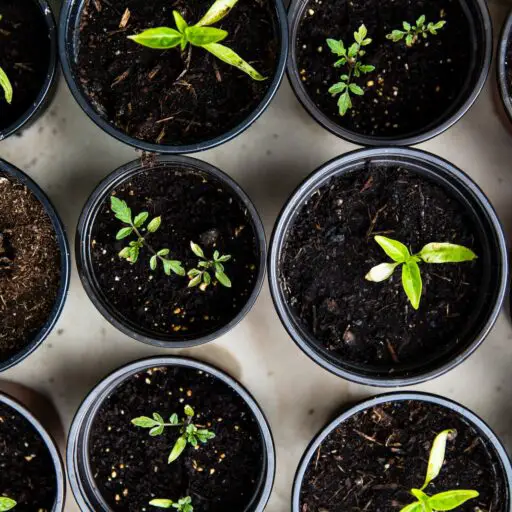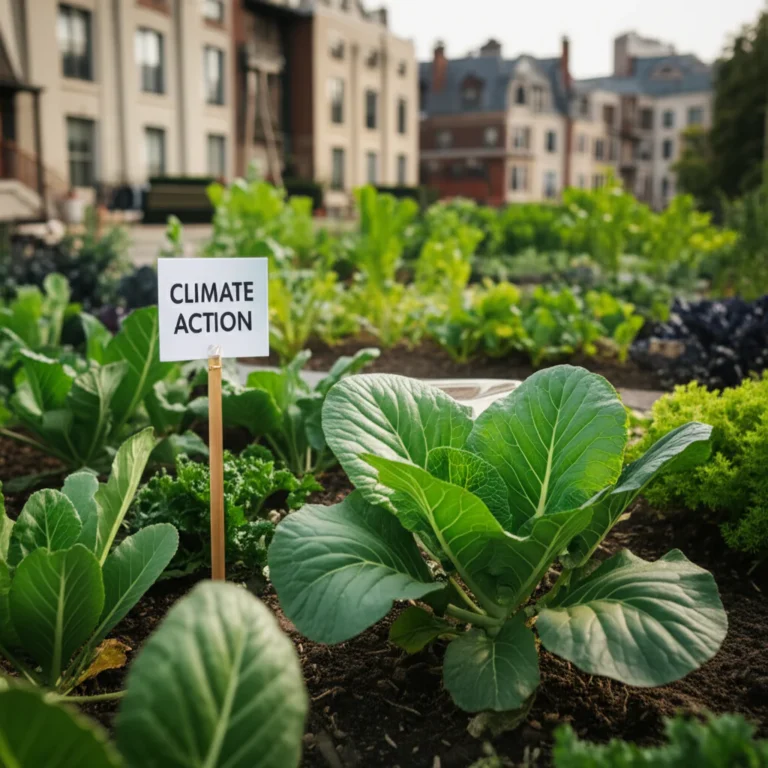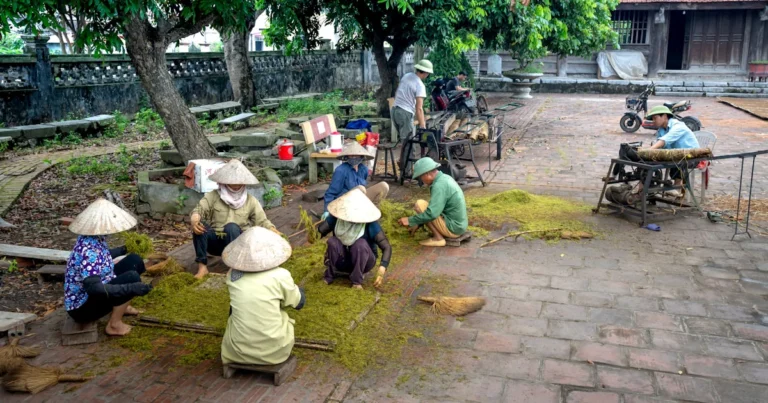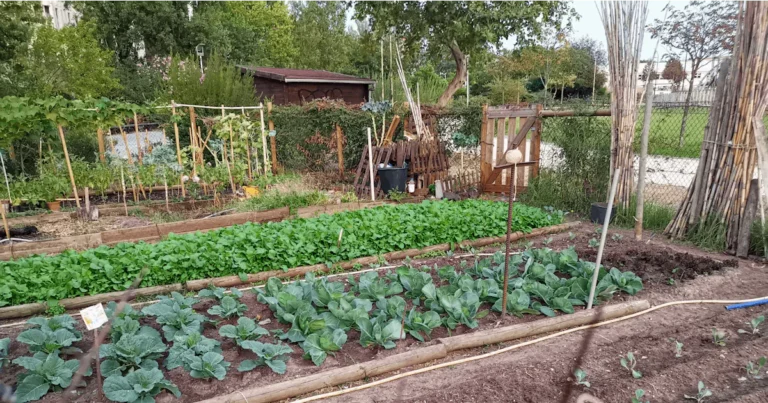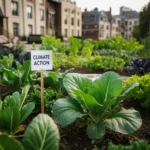Support our educational content for free when you purchase through links on our site. Learn more
Imagine a patch of land in the heart of your neighborhood where strangers become friends, stories are shared over freshly picked tomatoes, and a sense of belonging blooms alongside the flowers. Community gardens aren’t just about growing plants—they’re vibrant social ecosystems that nurture connections, foster inclusivity, and heal minds. But how exactly do these green spaces weave the social fabric tighter?
In this article, we’ll dig deep into 10 proven ways community gardens promote social connections and build a true sense of community. From shared meals and mentorship programs to inclusive design and mental health benefits, you’ll discover how these gardens transform neighborhoods into thriving, supportive networks. Plus, we’ll share inspiring success stories and practical tips to start your own garden oasis. Ready to uncover the secret social power of soil? Let’s get growing!
Key Takeaways
- Community gardens act as social hubs, fostering friendships and cooperation through shared activities like workdays, potlucks, and educational workshops.
- They provide therapeutic benefits, reducing stress and improving mental health by connecting people with nature and each other.
- Inclusive design and programming make gardens welcoming to diverse communities, breaking down barriers and encouraging participation from all ages and backgrounds.
- Local organizations and tool-sharing programs play a vital role in sustaining engagement and resources for community gardens.
- Starting your own community garden can be a rewarding way to build social bonds and improve neighborhood well-being.
👉 Shop top gardening tools and seeds to get started:
- Fiskars Garden Tool Set on Amazon | Fiskars Official Website
- Burpee Organic Seeds on Amazon | Burpee Official Website
Table of Contents
- Quick Tips and Facts About Community Gardens and Social Connections 🌱
- Roots of Togetherness: The History and Evolution of Community Gardens 🌿
- What Exactly Are Community Gardens? Defining Social Green Spaces 🏡
- How Community Gardens Cultivate Social Bonds: The Science Behind the Soil 🤝
- 10 Ways Community Gardens Boost Social Connections and Build Community Spirit 🌻
- Mental Health Magic: How Community Gardening Nurtures Emotional Well-Being 💚
- Breaking Barriers: Community Gardens as Inclusive Spaces for Diverse Neighborhoods 🌍
- Events and Activities That Spark Friendships in Community Gardens 🎉
- The Role of Local Organizations and Brands in Supporting Community Gardens 🌟
- Gardening Tools and Resources That Bring People Together: Our Top Picks 🛠️
- Challenges and Solutions: Keeping Community Gardens Thriving and Inclusive 🌾
- Success Stories: Real-Life Tales of Community Gardens Transforming Neighborhoods 📖
- How to Start Your Own Community Garden and Grow Social Connections 🌱
- Conclusion: The Lasting Impact of Community Gardens on Social Fabric 🌼
- Recommended Links for Community Garden Enthusiasts 🔗
- FAQ: Your Burning Questions About Community Gardens Answered ❓
- Reference Links: Trusted Sources and Further Reading 📚
Quick Tips and Facts About Community Gardens and Social Connections 🌱
To get started with understanding how community gardens promote social connections and a sense of community, it’s essential to know the basics of community gardening. Check out our related article about what are 5 benefits of a community garden? to learn more. Here are some quick tips and facts:
- Community gardens are shared green spaces where people come together to grow their own fruits, vegetables, and flowers.
- These gardens foster social connections among community members, promoting a sense of belonging and togetherness.
- They provide opportunities for people to learn new skills, share knowledge, and build relationships with their neighbors.
- Community gardens can be found in urban, suburban, and rural areas, and they can be adapted to fit the needs of the local community.
- They offer a range of benefits, including access to fresh produce, physical activity, and mental health benefits.
Benefits of Community Gardens
Some of the key benefits of community gardens include:
- Improved mental health: Gardening has been shown to reduce stress, anxiety, and depression.
- Increased social connections: Community gardens provide a space for people to meet and interact with their neighbors.
- Access to fresh produce: Community gardens provide a source of fresh, healthy produce for community members.
- Opportunities for physical activity: Gardening can be a great way to get exercise and improve physical health.
Roots of Togetherness: The History and Evolution of Community Gardens 🌿

Community gardens have a rich history that dates back to the 19th century. The concept of community gardening has evolved over time, with different models and approaches emerging in different parts of the world. To learn more about the history of community gardens, check out our category on Community Garden Policies.
Early Beginnings
The first community gardens were established in Europe and North America, where they were seen as a way to promote social reform and improve the lives of urban residents. These early gardens were often small and informal, with community members coming together to share land, tools, and knowledge.
What Exactly Are Community Gardens? Defining Social Green Spaces 🏡
Community gardens are shared green spaces that are managed and maintained by community members. They can take many different forms, from small plots of land to large urban farms. To learn more about garden design ideas, check out our category on Garden Design Ideas.
Key Characteristics
Some of the key characteristics of community gardens include:
- Shared ownership: Community gardens are owned and managed by the community, rather than by a single individual or organization.
- Collective decision-making: Community members come together to make decisions about the garden, including what to plant, how to maintain it, and how to share the produce.
- Inclusive and accessible: Community gardens are open to all members of the community, regardless of their background, income, or ability.
How Community Gardens Cultivate Social Bonds: The Science Behind the Soil 🤝
Community gardens have been shown to have a positive impact on social connections and community cohesion. To learn more about the benefits of community gardens, check out our category on Benefits of Community Gardens.
The Power of Shared Activity
One of the key ways that community gardens cultivate social bonds is through shared activity. When people come together to work on a common project, they build relationships and develop a sense of trust and cooperation.
10 Ways Community Gardens Boost Social Connections and Build Community Spirit 🌻
Here are 10 ways that community gardens can boost social connections and build community spirit:
- Shared meals: Community gardens can host shared meals, where community members come together to share food and conversation.
- Workdays: Community gardens can organize workdays, where community members come together to work on the garden and build relationships.
- Educational programs: Community gardens can offer educational programs, such as workshops and classes, to teach community members about gardening and sustainability.
- Volunteer opportunities: Community gardens can provide volunteer opportunities, where community members can come together to work on the garden and build relationships.
- Community events: Community gardens can host community events, such as festivals and fairs, to bring community members together and build a sense of community.
- Garden plots: Community gardens can provide garden plots, where community members can grow their own fruits and vegetables and share knowledge and resources.
- Tool sharing: Community gardens can establish tool-sharing programs, where community members can share tools and equipment to reduce waste and build relationships.
- Mentorship programs: Community gardens can establish mentorship programs, where experienced gardeners can mentor new gardeners and build relationships.
- Language classes: Community gardens can offer language classes, where community members can come together to learn a new language and build relationships.
- Art programs: Community gardens can offer art programs, where community members can come together to create art and build relationships.
Mental Health Magic: How Community Gardening Nurtures Emotional Well-Being 💚
Community gardening has been shown to have a positive impact on mental health, reducing stress, anxiety, and depression. To learn more about the mental health benefits of community gardens, check out our category on Mental Health and Trauma in New Jersey Communities.
The Therapeutic Benefits of Gardening
Gardening has been shown to have a range of therapeutic benefits, including:
- Reduced stress: Gardening can reduce stress and anxiety by providing a calming and peaceful environment.
- Improved mood: Gardening can improve mood and reduce symptoms of depression.
- Increased self-esteem: Gardening can increase self-esteem and confidence by providing a sense of accomplishment and pride.
Breaking Barriers: Community Gardens as Inclusive Spaces for Diverse Neighborhoods 🌍
Community gardens can be inclusive spaces that bring together people from diverse backgrounds and neighborhoods. To learn more about community garden events, check out our category on Community Garden Events.
The Power of Inclusive Design
Inclusive design can help to create community gardens that are welcoming and accessible to all members of the community. This can include:
- Accessible pathways: Wide, smooth pathways that are easy to navigate for people with mobility impairments.
- Raised beds: Raised beds that are easy to access for people with mobility impairments.
- Multilingual signage: Signage that is translated into multiple languages to ensure that all community members can understand and participate.
Events and Activities That Spark Friendships in Community Gardens 🎉
Community gardens can host a range of events and activities that spark friendships and build community spirit. To learn more about edible plants, check out our category on Edible Plants.
Garden Parties
Garden parties can be a great way to bring community members together and build relationships. These can include:
- Potluck dinners: Community members can bring a dish to share and enjoy a meal together.
- Garden tours: Community members can give tours of their garden plots and share knowledge and advice.
- Live music: Community gardens can host live music events, such as concerts or festivals.
The Role of Local Organizations and Brands in Supporting Community Gardens 🌟
Local organizations and brands can play a critical role in supporting community gardens and promoting social connections. To learn more about garden design ideas, check out our category on Garden Design Ideas.
Partnerships and Collaborations
Partnerships and collaborations between community gardens and local organizations can help to:
- Secure funding: Local organizations can provide funding and resources to support community gardens.
- Provide expertise: Local organizations can provide expertise and technical assistance to community gardens.
- Promote the garden: Local organizations can help to promote the community garden and attract new members.
Gardening Tools and Resources That Bring People Together: Our Top Picks 🛠️
There are a range of gardening tools and resources that can help to bring people together and promote social connections in community gardens. To learn more about community garden policies, check out our category on Community Garden Policies.
Tool Sharing Programs
Tool sharing programs can help to reduce waste and build relationships among community members. These programs can include:
- Tool libraries: Community gardens can establish tool libraries where members can borrow tools and equipment.
- Tool sharing platforms: Online platforms can connect community members who want to share tools and equipment.
Challenges and Solutions: Keeping Community Gardens Thriving and Inclusive 🌾
Community gardens can face a range of challenges, from funding constraints to conflicts among members. To learn more about the benefits of community gardens, check out our category on Benefits of Community Gardens.
Building a Strong Community
Building a strong community is critical to the success of a community garden. This can involve:
- Establishing clear policies: Community gardens can establish clear policies and guidelines to ensure that all members are on the same page.
- Fostering open communication: Community gardens can foster open communication among members to build trust and resolve conflicts.
- Providing training and education: Community gardens can provide training and education to help members develop new skills and build confidence.
Success Stories: Real-Life Tales of Community Gardens Transforming Neighborhoods 📖
There are many success stories of community gardens transforming neighborhoods and promoting social connections. To learn more about community garden events, check out our category on Community Garden Events.
The Power of Community
The power of community is a key factor in the success of community gardens. When community members come together to work towards a common goal, they can achieve great things.
How to Start Your Own Community Garden and Grow Social Connections 🌱
Starting a community garden can be a rewarding experience that brings people together and promotes social connections. To learn more about garden design ideas, check out our category on Garden Design Ideas.
Finding a Location
Finding a location is a critical step in starting a community garden. This can involve:
- Identifying a vacant lot: Community gardens can be established on vacant lots or other underutilized spaces.
- Securing funding: Community gardens can secure funding from local organizations or government agencies to support the garden.
- Building a team: Community gardens can build a team of dedicated volunteers to help establish and maintain the garden.
Conclusion: The Lasting Impact of Community Gardens on Social Fabric 🌼

Wow, what a journey through the vibrant world of community gardens! From their humble roots as urban reform tools to thriving hubs of social connection and mental wellness, community gardens truly are green goldmines for neighborhoods. As we’ve explored, these shared spaces do more than just grow plants—they cultivate friendships, foster inclusivity, and nurture emotional well-being.
We uncovered how community gardens act as social glue, bringing together diverse groups, breaking down barriers, and even serving as therapeutic sanctuaries for mental health. Plus, the power of shared activities, events, and inclusive design can transform a patch of earth into a buzzing community heartbeat.
But remember, community gardens aren’t without challenges—issues like unequal access or resource conflicts need mindful solutions. Still, with clear policies, open communication, and local support, these green spaces can flourish and continue to build stronger, healthier communities.
If you’re inspired to start your own community garden or deepen your involvement, now’s the perfect time to dig in! The benefits are bountiful and lasting—both for the soil and the soul.
Recommended Links for Community Garden Enthusiasts 🔗
Ready to gear up and grow together? Here are some top-rated tools and resources to help you get started or enhance your community garden experience:
- Fiskars Garden Tool Set: Amazon | Fiskars Official Website
- Corona Clipper Pruners: Amazon | Corona Official Website
- Burpee Organic Seed Collection: Amazon | Burpee Official Website
- Gardener’s Supply Company Raised Garden Beds: Gardener’s Supply
- “The Community Garden Handbook” by Ben Raskin: Amazon
- “Urban Gardening: How to Grow Food in the City” by David Tracey: Amazon
FAQ: Your Burning Questions About Community Gardens Answered ❓

What are the benefits of participating in a community garden for mental health and wellbeing?
Community gardening offers a natural remedy for stress and anxiety. Engaging with soil and plants promotes mindfulness, reduces cortisol levels, and fosters a sense of accomplishment. According to Rutgers Cooperative Extension, gardening can improve mood, reduce depression symptoms, and enhance overall psychological well-being by providing a peaceful, restorative environment. Plus, the social interactions in community gardens combat loneliness and build emotional resilience.
How can community gardens be used to build relationships and foster a sense of belonging among residents?
Community gardens act as social hubs, bringing together people from diverse backgrounds to collaborate on a shared goal. Activities like workdays, potlucks, and educational workshops create opportunities for interaction and friendship. The shared responsibility and collective decision-making foster trust and cooperation, which are the cornerstones of community spirit. As Project Evergreen highlights, green spaces provide neutral grounds where social bonds flourish naturally.
What role do community gardens play in promoting intergenerational connections and knowledge sharing?
Community gardens are living classrooms where gardeners of all ages exchange wisdom and skills. Older gardeners often mentor younger or novice members, passing down traditional horticultural knowledge and cultural practices. This intergenerational exchange strengthens community ties and preserves local heritage. It also empowers youth with practical skills and a sense of purpose, bridging generational divides.
How can community gardens be designed to facilitate social interaction and community engagement among gardeners?
Designing for inclusivity and interaction is key. Features like communal seating areas, wide accessible pathways, and shared tool sheds encourage casual conversations and cooperation. Incorporating spaces for events—like picnic tables or small amphitheaters—invites gatherings and celebrations. Multilingual signage and raised beds ensure accessibility for all abilities and backgrounds. Thoughtful design transforms a garden from a collection of plots into a vibrant social ecosystem.
How do community gardens address challenges related to equitable access and inclusivity?
While community gardens have immense potential for social good, they can sometimes reflect existing social inequalities. Awareness and proactive policies are essential to ensure equitable access. This includes transparent membership rules, affordable or free plot options, and outreach to marginalized groups. Community leadership should be diverse and representative, fostering an environment where all voices are heard and valued.
What are some effective ways to sustain community engagement in long-term community garden projects?
Sustaining engagement requires ongoing communication, celebration, and adaptation. Regular meetings, newsletters, and social media keep members informed and connected. Hosting seasonal events, workshops, and volunteer days maintain enthusiasm. Listening to community feedback and evolving garden goals ensures relevance and inclusivity. Partnerships with local organizations can provide resources and fresh ideas to keep the garden thriving.
Reference Links: Trusted Sources and Further Reading 📚
- Rutgers Cooperative Extension: Community Gardens and Mental Health
- National Institutes of Health (NIH) – PMC Article on Community Gardens: Social Connections and Community Gardens
- Project Evergreen: Social Connections and Green Spaces
- American Horticultural Therapy Association: Find a Registered Horticultural Therapist
- Gardener’s Supply Company: Community Garden Resources
- Fiskars Official Website: Garden Tools
- Burpee Seeds: Organic Seed Collections
We hope this deep dive has planted the seeds of inspiration for your own community gardening adventure! Remember, every seed you sow is a step toward a stronger, greener, and more connected community. 🌻🌍 Happy gardening!
